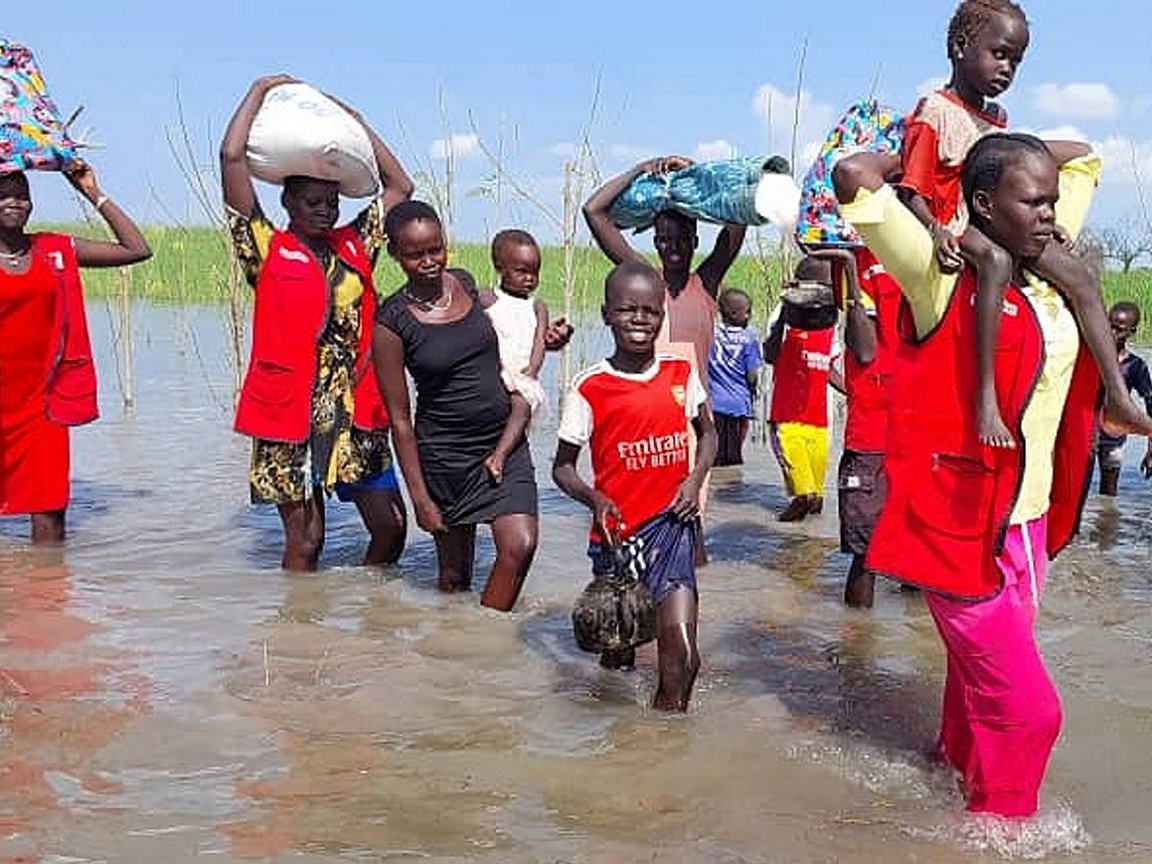
At opposite ends of Sahel, emergency IFRC-DREF funding for ‘imminent floods’

By the Climate Centre
After above-average rainfall was forecast from August to October, the IFRC’s Disaster Response Emergency Fund this week issued a grant of nearly 170,000 Swiss francs to enable the Malian Red Cross limit the impacts of potential flooding for 7,000 people in the south-east of the country.
This follows a similar “imminent floods” IFRC-DREF grant for the same amount issued at the beginning of August for the South Sudan Red Cross, after the authorities there said they were “expecting unprecedented floods over large areas of the country”.
Dams have already been opened in Mali to release surplus water and several thousand people have been affected. The Mali Red Cross estimates that as many as 50,000 people could be affected by floods, especially in the Niger and Senegal river basins.
There is acute concern in South Sudan for hundreds of thousands of people in the Bentiu IDP camp, described this week by the Guardian newspaper “as one of the most vulnerable towns on Earth: a sprawling settlement whose streets lie below the water level of a huge lake that is steadily rising on all sides.”
Emergency work by nearly 300 Pakistani military engineers serving with the UN mission has raised the dykes around the camp to at least four metres, but it may not be enough.
“The impact of flooding in 2024 is likely to be compounded by ongoing insecurity and conflict, previous consecutive flooding incidents, limited access to basic services, and high levels of food insecurity,” said IFRC-DREF. More than 2 million people in South Sudan could be affected, with as many as 1,200,000 displaced.
‘Streets below the water level of a huge lake that is steadily rising on all sides’
The Climate Centre’s Ouagadougou-based scientist Kiswendsida Guigma said today: “There are now fears climate change may be intensifying an already above-normal rainy season in parts of the Sahel region.
“Various national and international centres forecast the wetter-than-normal conditions currently being observed, and August – typically the wettest month of the year – indeed started with increased precipitation leading to floods in many places.
“The situation is expected to get worse before it gets better, so the anticipatory assistance from IFRC-DREF is very timely.”
Planned anticipatory action work by the Red Cross Red Crescent Movement in Mali includes construction of dykes, cleaning drainage networks, early warning and evacuation where appropriate, setting up 60 shelters, and prioritizing at least 500 displaced households for hygiene and safe water.
The imminent DREF allocation will support wider South Sudanese Red Cross flood preparedness for more than 200,000 highly vulnerable people around the White Nile river basin, including with water, sanitation and hygiene, for two months.
IFRC-DREF says the South Sudan Red Cross “has been responding to flood events in recent years but the expected floods for 2024 season have been indicated by all major experts as higher than usual with foreseen devasting impact.
“Experts from various sources have warned of major flood-events in the latter half of 2024 … driven by unprecedented water levels in Lake Victoria and forecasts of above-average rainfall.”
South Sudan Red Cross emergency teams in Fangak county of South Sudan’s Greater Upper Nile region last week help community members evacuate to the higher ground after heavy rainfall caused a surge that broke a local dyke. (Photo: SSRC via social media)